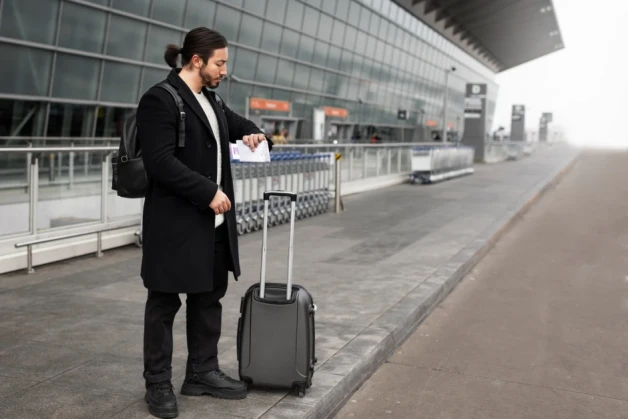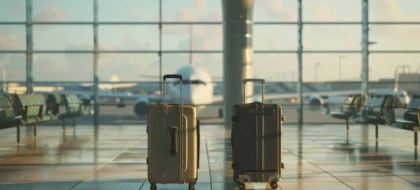Understanding Airline Travel Classes: More Than Just Price
Airline cabins are typically divided into three main travel classes: Economy, Business, and First Class. Each comes with its own set of benefits, pricing, and service levels designed for different travel goals and budgets. Some airlines also offer hybrid options like Premium Economy or Economy Plus, which fill the gap between comfort and cost.
Economy Class is the standard choice for most travelers. It’s budget-friendly, widely available, and sufficient for short-haul flights. But for long business trips, its limitations may become apparent: narrow seats, limited legroom, and minimal privacy can leave you drained before your meetings even start.
Business Class is tailored for corporate travelers who prioritize comfort and productivity. Spacious seating, high-quality meals, lounge access, and priority boarding are just some of the features that justify its higher cost. Many companies choose Business Class for senior staff or long-haul itineraries where rest and work matter.
First Class offers the highest level of luxury in the sky. Fully private suites, fine dining, and premium airport services make this option best suited for high-level executives or once-in-a-lifetime trips. It’s expensive—but for some, worth every cent.
Flying Economy for Business: The Cost-Saving Standard
Economy Class remains the most accessible and widely used travel class for business trips—especially for startups, SMEs, or budget-conscious organizations. Airlines offer various levels of economy fares, from basic economy (no checked baggage, limited flexibility) to standard economy with more generous allowances.
On most flights, economy passengers are entitled to:
- One carry-on and one checked bag
- Standard seat pitch (usually 29–31 inches)
- Complimentary meals or snacks on longer flights
- Basic in-flight entertainment
While these options suffice for short regional hops or one-day meetings, the lack of comfort can be detrimental for trips that require peak performance. Jet lag, stiff joints, and noisy cabins can take a toll—especially if you land just hours before a critical presentation.
Still, economy remains a solid choice if your travel is short-haul, your company enforces budget limits, or you plan to rest after landing rather than dive into business immediately.
Business Class: Optimized for Comfort, Efficiency, and Focus
Business Class is where work and travel meet. It’s the ideal option when your job requires you to hit the ground running—refreshed, focused, and ready to perform.
Key perks include:
- Extra baggage allowance (often 2×32 kg bags)
- Priority check-in, security, boarding, and baggage claim
- Lounge access for pre-flight relaxation or work
- Fully reclining seats (often into lie-flat beds)
- Gourmet meals, premium beverages, and Wi-Fi access
Business Class cabins are designed for productivity. Noise is minimal, seats are spaced for privacy, and some airlines even provide desk-like features or collaboration areas. If you're preparing for a presentation, writing a report, or holding virtual meetings, Business Class offers the environment to make it happen.
For many corporate travelers, the higher ticket cost is justified by saved time, better health, and improved focus upon arrival.
First Class: When Exclusivity and Prestige Matter
First Class is in a league of its own. On international long-haul flights, it offers unmatched comfort and personal attention. While not always a company-approved option, some firms allow First Class travel for top-level executives or major business milestones.
Here’s what First Class typically includes:
- Private suites or enclosed pods
- Designer bedding and sleepwear
- On-demand gourmet dining with à la carte options
- Dedicated flight attendants
- Exclusive chauffeur service in select airports
With First Class, your flight feels more like a five-star hotel stay. It’s perfect for overnight trips where rest is critical or for making a statement with partners, clients, or investors. However, it comes at a premium—often two to three times the price of Business Class.
Unless you're a C-suite executive or traveling on a mission-critical assignment, First Class may be more of a luxury than a necessity.
Choosing the Right Travel Class for Your Business Trip
The best class for your business trip depends on several factors: flight duration, itinerary, your company’s travel policy, and the purpose of your trip. Here's how to assess:
- Short flights under 3 hours: Economy is usually sufficient, especially if your schedule allows downtime after arrival.
- Red-eye or long-haul international flights: Business Class can be a game changer, offering rest, comfort, and a chance to arrive ready to work.
- High-stakes or client-facing missions: Consider Business or even First Class if impression and performance matter.
Also, consider your company’s policy. Some companies restrict Business Class to flights over a certain number of hours or to senior roles. Others allow upgrades if it leads to better productivity or reduces overall travel fatigue.
In any case, don’t hesitate to request an upgrade if your travel context warrants it—especially if you’re flying overnight, heading straight to a client meeting, or managing jet lag.
Final Thoughts: Align Travel Class With Your Goals
Choosing the right airline class isn’t just about price—it’s about value. Economy makes sense for routine travel where saving money matters. Business Class is the clear winner for trips that demand performance and professionalism. First Class, though not essential, is a statement of prestige and a powerful tool for executive-level missions.
The key is to match your flight experience to your purpose. If arriving alert, focused, and composed could make or break your business goals, don’t compromise. Sometimes, a good night’s sleep at 35,000 feet is the best investment you can make.




-detail-desktop-list-desktop.webp)
